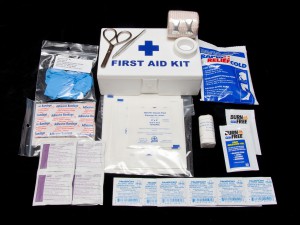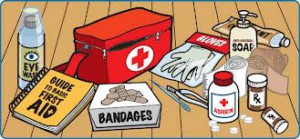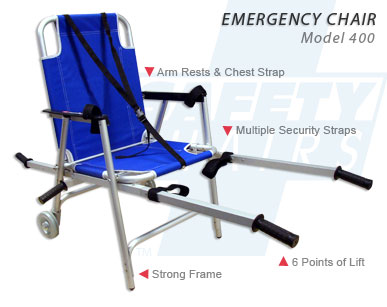Blog

Earthquake. Natural Disaster. Hurricane. Our newspaper headlines have been talking non-stop about these events, while the kids were getting settled back into school. Now your PAC needs to do some fundraising. But your tired of selling the same old thing to your family, neighbors and friends. Does anyone really need more chocolates, flowers and wrapping paper? Okay, we all need more chocolate! Launch a fundraiser that provides your community an opportunity to get prepared while raising those important dollars at the same time. By selling 72 hour Emergency Preparedness Kits, you provide the tools necessary for families to survive ANY emergency and/or earthquake and your PAC can earn up 10% per kit sold for your PAC.
On October 19th at 10:19am, over 500,000 will join with ShakeOutBC and practice DROP, COVER & HOLD. Register your school and join in to practice being safe during an earthquake https://www.shakeoutbc.ca/
PROTECT your loved ones. RAISE money for your school.
Call 604.277.5855 to get started now
SOS-Fundraiser-Poster-2017
Blog
Although we originally posted this blog in 2014, we thought it was prudent to re-post in light of the earthquake near Christmas 2015.
Each year it seems we all rotate the same resolutions in order to achieve a longer life: eat healthier, exercise more or quit a bad habit. All of these changes are controllable throughout the whole year, but what about unexpected events that can threaten your life? Unfortunately many people don’t think about emergency preparedness until they hear about a disaster that has happened somewhere else.
What if the disaster hits closer to home? Are you and your family prepared? Do you have an emergency plan?
Instead of recycling those usual and tired resolutions, this year make a resolution for you and your family to be safe. To help you out we at SOS Emergency Response Technologies have come up with 3 quick and easy steps to achieve this goal, so you can sit back and boast to your friends that you accomplished your resolutions for the year.
Step one – Check the batteries in your smoke detector.
Step two – Check your first aid kits. Take a look and see if any products are expired and need to be replaced. If you don’t have a first aid kit we recommend our General Purpose First Aid Kit FK1021 $14.95.

Step three – Check your emergency preparedness kit and update your emergency plan/contacts if needed. If you use bottles of water they have to be replaced yearly. Emergency Food Ration Bars and Emergency Sterile Water Packets last longer (5 years). Double check your contact lists to make sure it is up to date with current information and remind your family about the emergency plan you put in place. If you don’t have an emergency plan there are many sources on the internet. These days we find ourselves working and running errands at all hours of the day so the chances of your family being split up when a disaster hits are larger. Make sure you set a meeting point.
If you don’t have an emergency preparedness kit SOS Emergency Response Technologies has a variety of options to choose from. We have kits for 1, 2 and 4 person families and have economical versions as well.

That’s all there is to it! Although, there are a few extra steps you could take to make sure those around you are safe as well. Ask the human resources team if your workplace has an emergency plan as well as emergency kits. If you are on the safety committee make a point to bring it up at the next meeting and set up an emergency plan for your work place. SOS Emergency Response Technologies can also provide emergency preparedness kits and products for your workplace.
Blog
The Canadian May long weekend has passed which means camping season has officially begun. Minor injuries and illnesses can ruin a camping trip if you don’t have a first aid kit stocked with the right supplies. A well-equipped first aid kit is an essential item to pack for any camping road trip.

Here is a list of items to consider including in your first aid kit:
Bandages and Dressings
- Elastic bandages (Band-Aids; for everyday cuts and scratches)
- Adhesive and butterfly bandages (effective for use in the closure of a deep cut or wound)
- Roll bandages (when moderate compression is needed
- Triangular bandages (for head or appendage, as a handy arm sling, or even as a tourniquet)
- Sterile gauze pads/non-adhesive dressings (ideal for cleansing and covering larger cuts, scrapes and minor burns because they are highly absorbent)
- Large wound dressings
- Blister dressing (particularly useful if you plan to do a lot of walking)
- Adhesive tape cloth-based (can be used to hold bandages and dressings in places)
- An ice pack (to cool and reduce swelling)
- Splinting materials (to provide support to an injured area to stop it moving)
Miscellaneous Essentials
- Safety pins (to secure bandages)
- Scissors (to trim bandages and other uses)
- Tweezers and needles (to remove splinters or ticks)
- Antiseptic wipes (used to clean wounds, cuts and scrapes and help prevent infection)
- Cotton swabs/cotton wool (used to apply ointments)
- Thermometer (for taking your temperature, useful if you have a fever or are not felling well)
- Non-latex gloves (help prevent the spread of infection into an open wound from the hand of someone cleaning / treating it)
- Large plastic bag (for soiled bandages and other used medical items)
Medications
- Topical antibiotic cream
- Oral antihistamine (such as Benadryl)
- Medications for pain or fever (such as Acetaminophen or Ibuprofen)
- Hydrocortisone cream (1%) (for insect bites)
- Diarrhea /vomiting medication (such as Imodium or Compro)
- Anti-acids (such as Tums or Rolaids)
- Eye drops (sooth irritated eyes)
- Travel / motion sickness medication (in the U.S. need a prescription for most medication)
- Personal medications (if you or anyone in your group suffers from any illnesses)
- Anti-inflammatory medication (such as Aleve)
Other medications to consider, depending on the time of year and where you’re going:
- Bee sting kit
- Snake bit kit
- Poison ivy cream/cleansers (such as Zanfel, TechNu or Band-Aid)
- Aloe vera gel or other moisturizer (for sun burn)
- Sinus medications (if it’s allergy season and you know you suffer badly, such as Claritin)
Some final tips:
- Replenish your first aid kit if any items are used and check medications for use by dates
- Pack your first aid kit in a well-labeled waterproof container. Make sure everyone in your party knows where it is kept
- Keep your kit as compact as possible, consider removing tubes of cream or ointments and strips of pills from their cardboard box and simply cut out the instructions. Keep them together with an elastic band
- Know how to use the items in your first aid kit, familiarize yourself with everything that’s in it, especially if it’s a pre-packaged one
- Tailor your first aid kit to the kind of trip you’re taking, the time of year and your own or families’ personal medical needs
- Bring a first aid manual if you are unfamiliar with basic first aid
- Consider taking a first aid class if you do not have any basic first aid knowledge, particularly if you have children.
Visit our online shop to view any of our ready made first aid kits https://sostech.ca/product-category/shop-online/
Blog
Are you ready for a severe emergency? Many businesses are not adequately prepared and as a result 40% of businesses affected by a major emergency or disaster never reopen.
It is tempting to believe that accidents and emergencies will never occur at your workplace, but the reality is that emergencies can occur anywhere, any time. And the fact is that most businesses just are not adequately prepared. A 2013 emergency preparedness survey conducted by Staples found that less than half of employers report being prepared for severe emergencies, and nearly 40 percent said their small business does not have emergency safety training or drills.
But according to Bob Risk, senior strategic safety, health, and preparedness manager for Staples, “It’s much easier to prepare for an emergency than to explain why you didn’t.”
The heart of your preparation is an emergency action plan (EAP) that covers the actions the company and employees must take to ensure safety in a crisis. You should train employees on the EAP as you would train them on any safety or health program. Frequent practice drills are an important part of ongoing emergency training.
Once employees are familiar with the basic procedures to follow in an emergency, it can be beneficial to introduce obstacles into your drills that mirror unforeseen circumstances that could occur during a real emergency. For example, force employees to use an alternate exit route, or plan for some key personnel to be absent so that their backups get a chance to practice their emergency duties.
And in order to succeed, an emergency plan must also be embraced by employees. After all, incidents don’t discriminate, and when an emergency hits, the impact is not limited to managers and safety committee members. No matter what type of workplace emergency your company may face, you can be prepared to respond effectively and help protect employees, property, and resources. Don’t wait for disaster to strike – take action now and put an emergency plan in place.
Call SOS Emergency Response Technologies today 604.277.5855 and one of our Health & Safety Consultants can help you prepare. Our staff can consult on your WorkSafeBC first aid requirements, safety needs and/or earthquake preparedness interests.







